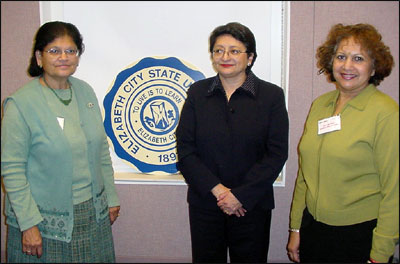|
On March 4 Dr. Sonia C. Gallegos presented a webcast from the campus of Elizabeth City State University on her research and development of optical models for the Yellow Sea. Sonia Gallegos holds a Ph.D. degree in Oceanography from Texas A & M University and is currently a Principal Investigator with the Naval Research Laboratory at Stennis Space Center in Mississippi. She has over 20 years of experience in Remote Sensing of the earth and oceans. She started her remote sensing career as a physical scientist with NOAA/NESDIS at the Johnson Space Center in Texas and Washington. At NOAA, her work included the development of visible and near-infrared algorithms for land and water applications. In 1986 she moved to the University of Texas at Austin - Center for Space Research where she worked in developing algorithms for red tide and oil detection from visible and infrared sensors. In 1990 she became part of Naval Research Laboratory Remote Sensing Applications Branch. At NRL she has developed algorithms for cloud detection and masking as well as a number of applications for naval tactical operations. She currently works in the Optics Branch of NRL where she develops models that integrate remote sensing measurements, in-situ data and products from dynamic models that allow the estimation of inherent optical properties from the surface to the bottom of the ocean.
|
|
||||
| Dr.
Linda B. Hayden |
 |
||||
| Dr.
Shobha Sriharan Virginia State University Dr. Sonia Gallegos Dr. Anuradha Dujari Delaware State University |
|
||||
| Dr. K. Palaniappan Mr. James Harrington |
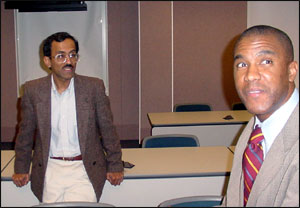 |
||||
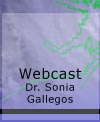

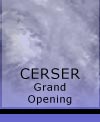
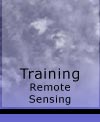


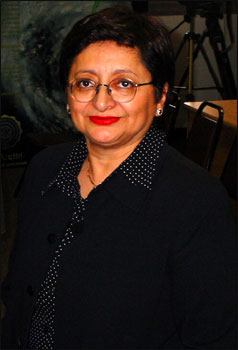 Webcast
with Dr. Sonia Gallegos
Webcast
with Dr. Sonia Gallegos
